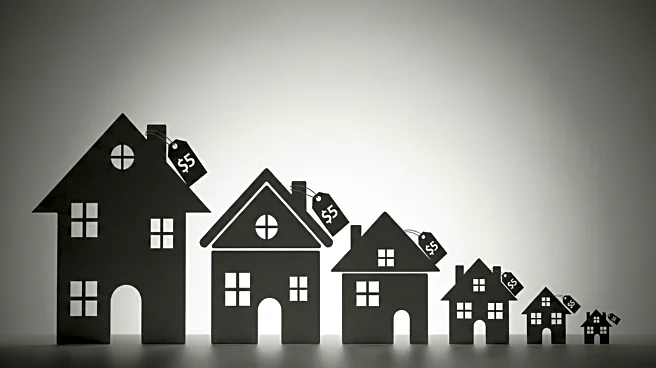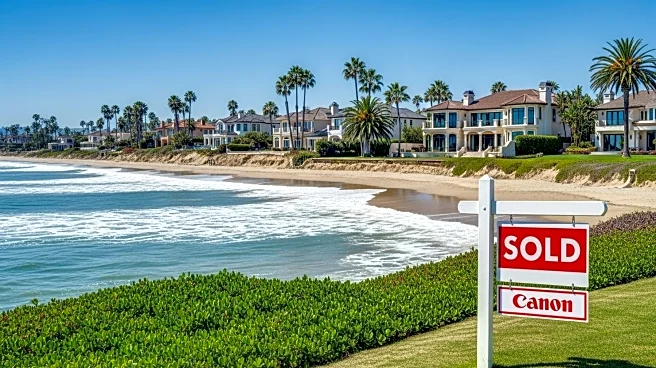What's Happening?
The Outer Banks real estate market has seen a slight decline in sales, according to a recent report by the Outer Banks Association of Realtors. The report highlights that overall sales have decreased by 1% compared to the previous year. While single-family detached home sales have remained stable, condominium sales have increased by 5%, and land/lot sales have dropped by 12%. The inventory for residential properties has risen by 12% compared to last August, whereas the inventory for lots and land has decreased by 4%. Additionally, the average time residential properties spend on the market has increased to 69 days in 2025, up from 54 days in 2024. The median sales price for residential properties has seen a marginal increase, now at $633,250 compared to $630,000 the previous year.
Why It's Important?
The slight decline in real estate sales in the Outer Banks reflects broader trends in the housing market, where inventory levels and market dynamics are shifting. The increase in condominium sales suggests a potential shift in buyer preferences, possibly due to affordability or lifestyle changes. The decrease in land sales could indicate a slowdown in new construction or development projects. These trends are significant for real estate investors, developers, and local government planning, as they may influence future market strategies and economic planning in the region. The extended time properties are spending on the market could also impact sellers' pricing strategies and buyers' negotiation power.
What's Next?
As the Outer Banks real estate market continues to adjust, stakeholders such as realtors, investors, and local authorities will likely monitor these trends closely. Potential responses could include strategic marketing efforts to attract buyers or adjustments in pricing strategies to align with market conditions. Additionally, the local government may consider policies to stimulate land sales or support residential development. The evolving market conditions could also prompt discussions on infrastructure and community planning to accommodate changing housing demands.










